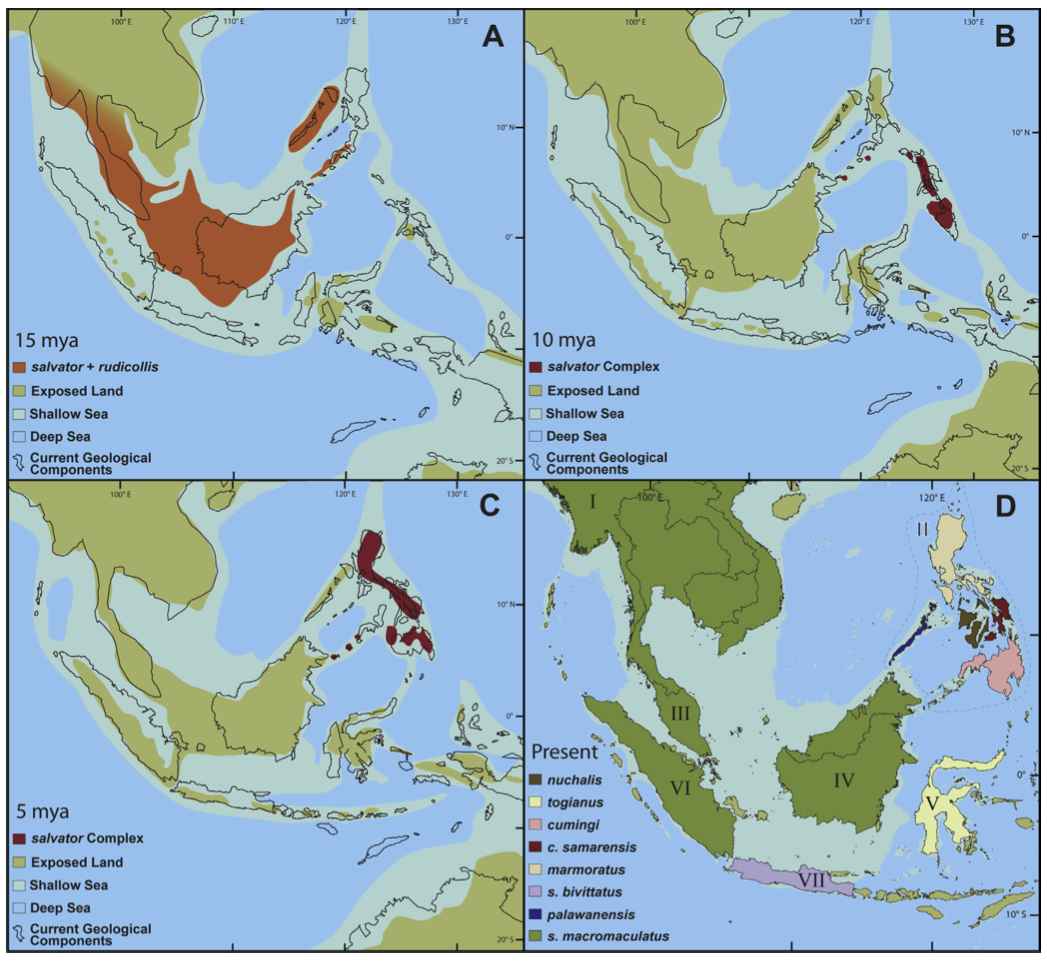Water Monitor Biogeography Grounded Through the Use of Fossils

The Philippines represent an ideal region for examining the effects of geologic and climatic influences on evolutionary processes and the accumulation of new species. Though the monitor lizard is the target of conservation efforts, little research has looked at the geological processes which have shaped the evolution and distribution of this group. Asian water monitors (Varanus salvator Complex) are distributed throughout a large part of Southeast Asia. The complex is made up of seven species and five subspecies.
Earlier considerations of this species complex have failed to consider its historical distribution and habitat. In this study we tested the idea that Southeast Asian water monitors became diverse on the mainland of Indochina and Sundaland and dispersed into the Philippine and Indonesian archipelago. We also explored three separate ideas relating to species movement into and out of the Philippines. We can explore these ideas especially with the help of genetic analyses, information from fossils, and models. Our results suggest that the Philippines are the historical source of Asian water monitors currently found throughout the Greater Sundas, peninsular Southeast Asia, and Indochina, and that many species evolved on the archipelago. These lizards later came to inhabit much of Southeast Asia and continued to evolve over the next five million years.
Our results shed light on the history and timing of Asian water monitor evolution, but they are somewhat limited by the geographic scope of sampling, the absence of samples from all lineages or major islands in the species complex, and the genes analyzed. Future studies with more thorough sampling will improve estimates of Asian water monitor evolution.
The Varanus salvator Complex initially diverged from its closest relative during a major geological transformation in the area nearly 14 million years ago. During this time the sea levels were over 150 feet lower and the land looked very different. It was most likely during this time that the ancestor of the species complex first invaded the Philippine archipelago most likely through the Sulu Archipelago and Zamboanga Peninsula. Additional species movements, sea-level changes, and increased volcanism likely contributed to the dynamic range we now see in the species complex. Over-water dispersal events resulted in the northward range expansion seen in the complex. Lower sea levels meant previously isolated islands were now connected, and this allowed for easy dispersal back out of the Philippines as well.
Analyses did not tell us whether the Varanus salvator Complex originated in the Philippines or Sundaland, but studies with more data may very well point towards the Philippines as the source of diversity within this complex.
–Tucker Walton
Welton, L.J., P.L. Wood Jr., J.R. Oaks, C.D. Siler, and R.M. Brown. 2014. Fossil-calibrated phylogeny and historical biogeography of Southeast Asian water monitors (Varanus salvator Complex). Molecular Phylogenetics and Evolution 74: 29–37. pdf
